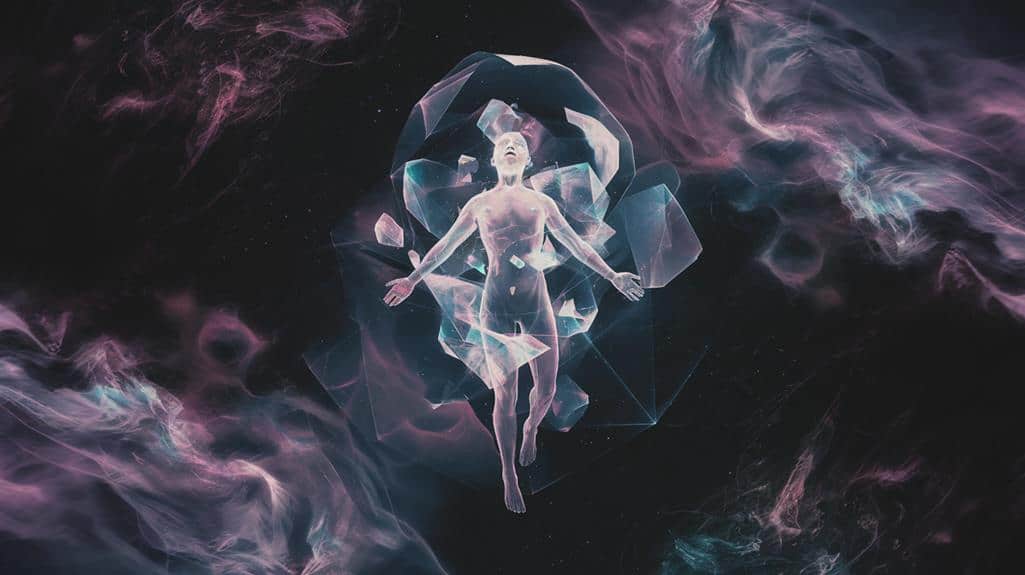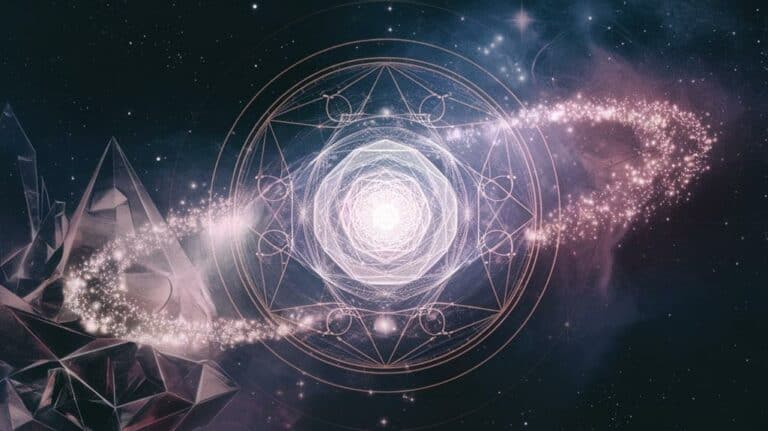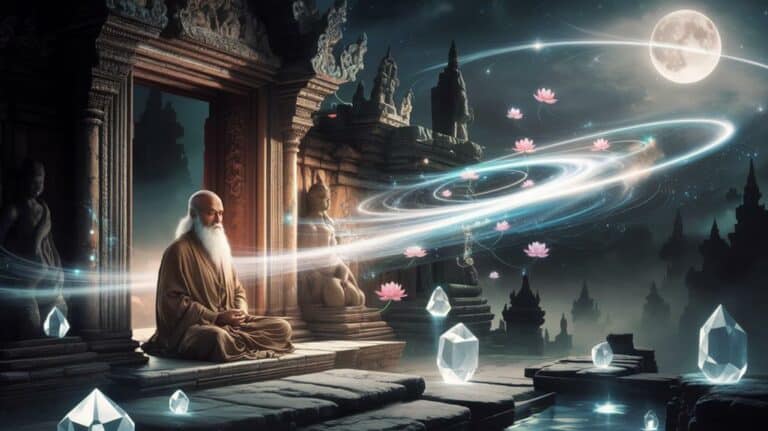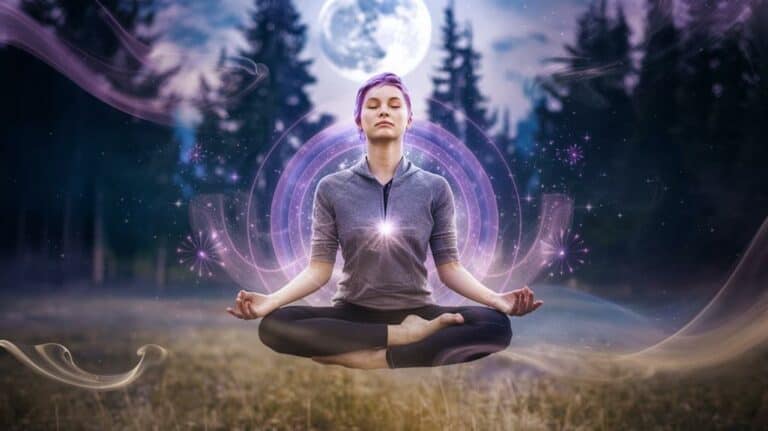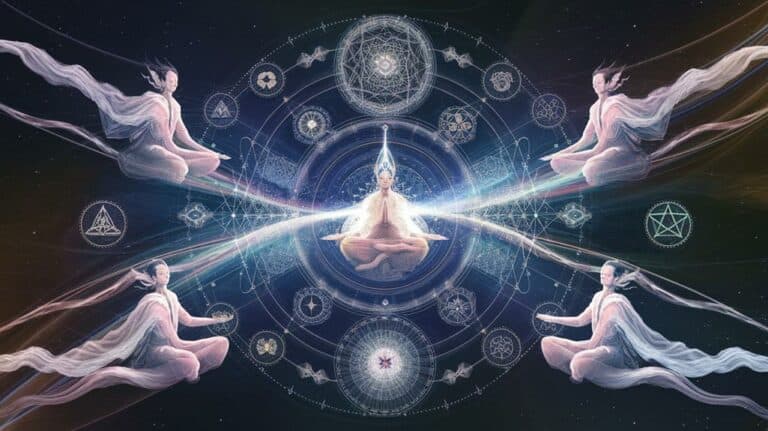Mystical Experiences in Sensory Deprivation
You’ve probably wondered what happens when your mind is stripped of all external stimuli. Beyond the initial quiet, sensory deprivation opens a door to extraordinary states of consciousness that you won’t encounter in everyday life. As your brain adapts to the absence of sensory input, you’ll find yourself drifting into altered states where time bends, self-awareness shifts, and reality takes on new dimensions. These experiences aren’t just fascinating anomalies—they’re windows into the deeper workings of human consciousness that have captivated both ancient mystics and modern scientists. What you’ll discover in this state of nothingness might challenge everything you think you know about your own mind.
The History of Sensory Isolation
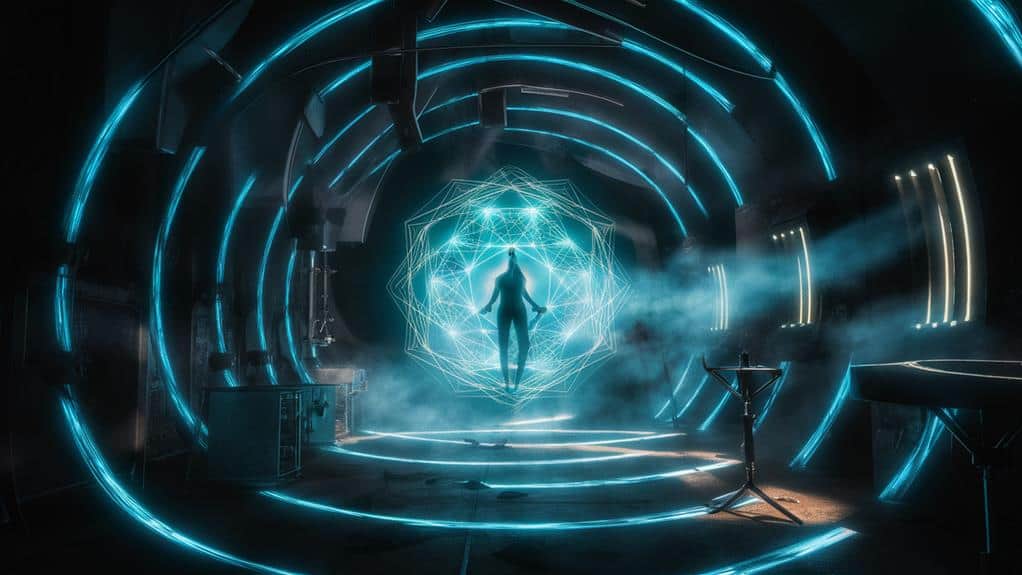
Anyone exploring the earliest records of sensory isolation will find its roots in ancient meditation practices. You’ll discover how spiritual seekers in India and Tibet would retreat to dark caves, spending years in solitude to achieve heightened states of consciousness.
These brave souls understood that by withdrawing from external stimuli, you could access deeper domains of awareness that typically remain hidden beneath life’s constant sensory barrage.
As you trace this practice through history, you’ll encounter the Desert Fathers of early Christianity, who sought divine revelation in the empty expanses of Egypt’s wilderness.
By the mid-20th century, you’ll find scientists like John C. Lilly developing the first flotation tanks, transforming ancient wisdom into modern experimentation.
You’re following in the footsteps of researchers who’ve documented how sensory deprivation can induce altered states remarkably similar to those described by medieval mystics.
Today’s revival of isolation practices reflects humanity’s enduring quest to understand consciousness itself.
You’re part of an unbroken lineage stretching from cave-dwelling ascetics to contemporary psychonauts, all seeking to reveal the mysteries that emerge when you strip away the world’s constant chatter.
Understanding Altered States
Most altered states in sensory isolation fall along a predictable spectrum, ranging from mild relaxation to profound mystical experiences. You’ll find that as external stimuli fade away, your consciousness begins to shift, often moving through distinct phases that researchers have carefully documented.
In these states, you’re likely to experience time distortion, vivid imagery, and a dissolving sense of bodily boundaries. As you venture deeper into altered consciousness, you’ll discover that your mind creates its own reality in the absence of sensory input.
You might encounter what mystics call “the void” – a space where your ordinary sense of self temporarily dissolves, revealing deeper layers of awareness. These states aren’t mere hallucinations; they’re glimpses into the mind’s inherent capacity for transcendent experience.
You’ll notice that your thoughts become more fluid, less constrained by everyday logic, while your emotional sensitivity heightens dramatically.
What’s particularly fascinating is how these altered states can mirror experiences reported in deep meditation or shamanic journeys, suggesting they’re tapping into fundamental aspects of human consciousness that lie dormant in ordinary waking life.
Brain Activity During Deprivation
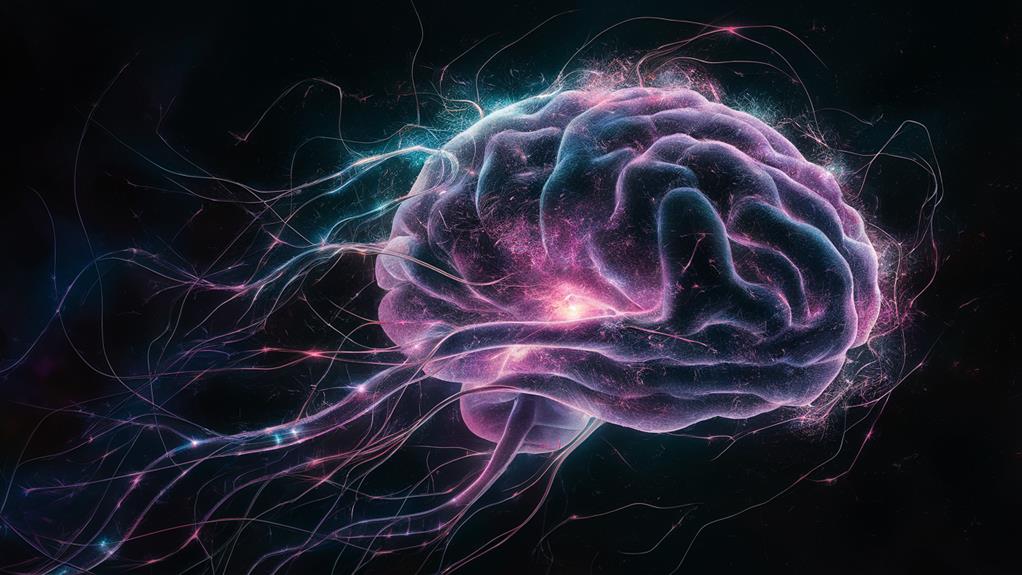
Scientific measurements reveal dramatic shifts in neural activity during sensory deprivation. When you’re cut off from external stimuli, your brain doesn’t simply idle – it enters a remarkable state of heightened internal processing.
Your default mode network, typically active during self-reflection, becomes increasingly dominant as your mind turns inward, searching for meaning in the void. As your sensory cortices receive less external input, they don’t fall silent. Instead, you’ll find they begin generating their own signals, creating vivid internal experiences that can feel more real than ordinary reality.
Your theta waves increase, similar to what you’d experience during deep meditation or lucid dreaming, while alpha patterns shift into unique configurations that researchers haven’t observed in normal waking states.
What’s particularly fascinating is how your brain’s connectivity patterns reorganize. Areas that don’t typically communicate begin forming temporary bridges, leading to unusual perceptual experiences and insights.
You’re fundamentally witnessing your brain’s extraordinary ability to adapt and create meaning, even when deprived of its usual sensory diet, demonstrating the remarkable plasticity of your consciousness.
Common Types of Hallucinations
Sensory deprivation regularly produces distinct categories of hallucinations, each with unique characteristics and triggers.
You’ll first encounter geometric patterns – shifting kaleidoscopes of light, fractals, and intricate webs that dance across your mind’s eye. These visual phenomena, known as form constants, emerge from your brain’s attempt to create order in the absence of external stimuli.
As you drift deeper into deprivation, you’ll experience more complex hallucinations. You might find yourself walking through detailed landscapes that feel impossibly real, or you’ll sense a presence beside you when you’re completely alone.
Your mind will conjure phantom touches – perhaps a gentle breeze across your skin or the sensation of floating in space. Auditory hallucinations often manifest as whispers, melodic tones, or the sound of distant conversations you can’t quite make out.
The most profound category involves distortions of your body image. You’ll feel your limbs stretching impossibly long, your consciousness expanding beyond physical boundaries, or your body dissolving entirely into the surrounding space.
These experiences often trigger deep questions about the nature of perception and reality itself.
Float Tank Mystical Phenomena
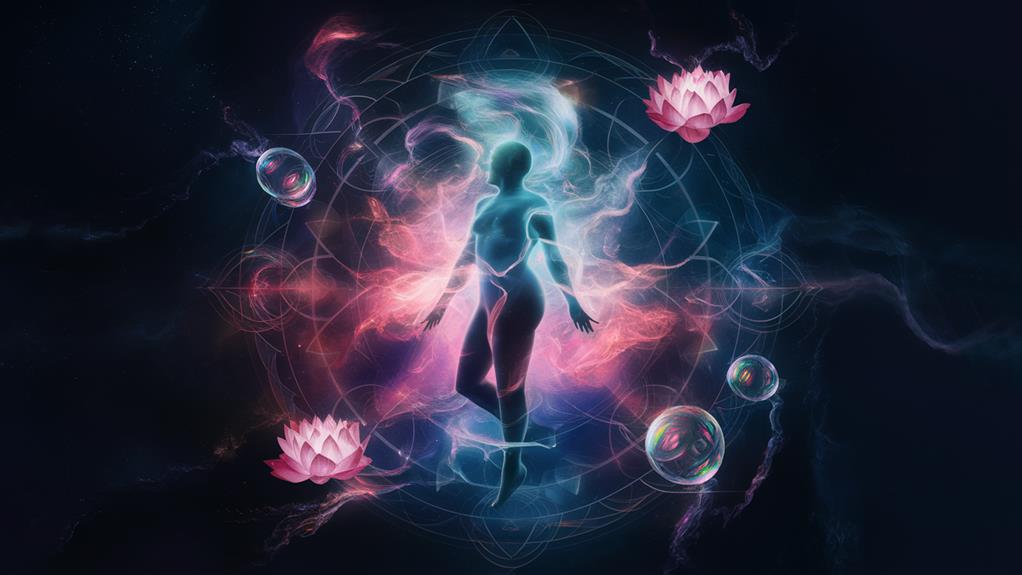
Beyond the typical hallucinations, float tanks can trigger profound mystical experiences that blur the line between consciousness and transcendence.
You’ll find yourself drifting into states where your sense of self dissolves, merging with something vast and indefinable. Many floaters report experiences of cosmic unity, where the boundaries between their physical form and the universe seem to disappear entirely.
In these deepened states, you might encounter what feels like direct communication with higher consciousness or access to universal wisdom.
You’ll often discover that time becomes meaningless – minutes might feel like hours, or hours like mere moments. Some floaters report out-of-body experiences, watching themselves from above or traveling through what they describe as different dimensions of reality.
Your consciousness may expand beyond normal perception, leading to profound insights about existence, purpose, and the nature of reality itself.
These aren’t mere relaxation responses; they’re fundamentally transformative experiences that can alter your worldview.
What makes float tank mysticism unique is its accessibility – you don’t need years of meditation practice or spiritual training to potentially access these transcendent states.
Scientific Research and Findings
Researchers have conducted extensive studies to understand the neurological and psychological effects of float tank experiences. You’ll find that scientific data reveals significant changes in brainwave patterns, showing increased theta wave activity similar to deep meditation states.
These studies demonstrate how your brain shifts from its usual beta waves into more contemplative spheres, opening doorways to expanded consciousness.
Recent neuroimaging research shows that during sensory deprivation, your default mode network – the brain system active during self-reflection – becomes highly engaged while your external awareness network decreases activity.
You’re witnessing your mind’s remarkable ability to turn inward when freed from external stimuli. Studies have documented consistent reports of altered time perception, vivid imagery, and profound insights among participants.
Research has also revealed that your body responds with measurable physiological changes: decreased cortisol levels, reduced blood pressure, and enhanced immune function.
Scientists have found that these mystical experiences aren’t merely subjective phenomena but are accompanied by quantifiable changes in your brain chemistry and neural activity, suggesting that transcendent states accessed through sensory deprivation have genuine biological foundations.
Ancient Practices of Isolation
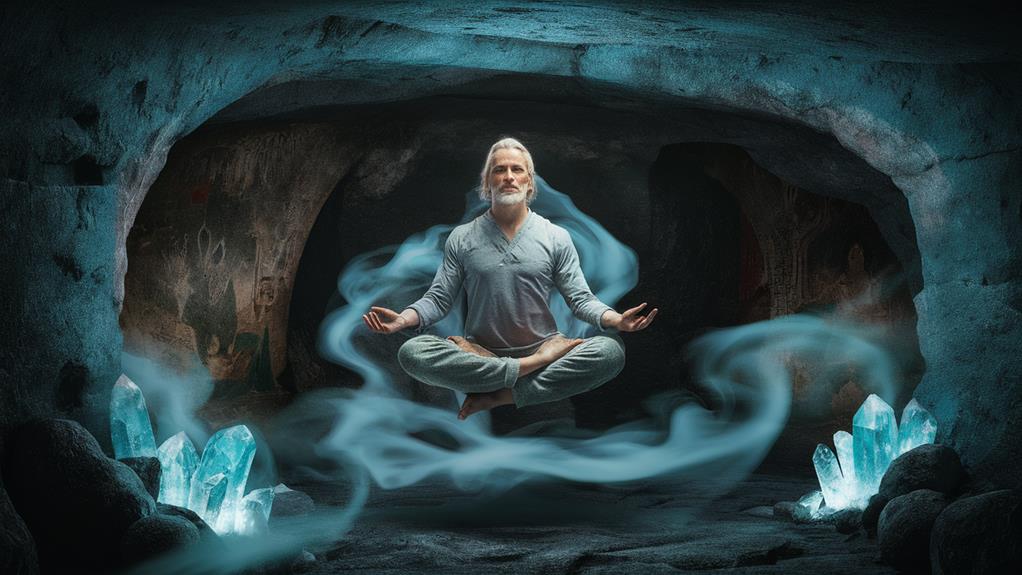
Throughout history, spiritual seekers have embraced isolation as a pathway to mystical enlightenment. You’ll find this practice echoed across cultures, from Buddhist monks retreating to mountain caves to Christian desert fathers who ventured into barren wilderness.
These ancient practitioners understood what you’re now rediscovering: that sensory withdrawal can open doors to expanded consciousness.
In ancient Egypt, you’d have witnessed initiates spending nights alone in dark temple chambers, while Hindu yogis sought isolation in remote Himalayan caves. Native American vision quests required you to spend days alone in nature, pushing beyond physical discomfort to reach heightened spiritual awareness.
These traditions weren’t mere tests of endurance – they represented a profound understanding that when you’re stripped of external stimuli, your inner world expands exponentially.
You’re walking in the footsteps of Tibetan monks who practiced dark retreat meditation, sometimes lasting years, and Japanese Zen practitioners who found enlightenment in simple, bare rooms.
These ancient methods reveal that you don’t need complex technology to achieve altered states – sometimes, the absence of sensation itself becomes the gateway to transcendence.
Modern Applications and Benefits
The ancient wisdom of sensory isolation has found new life in today’s scientific and therapeutic settings.
You’ll discover that modern float tanks and meditation chambers offer a sacred space where you can disconnect from the overwhelming stimuli of contemporary life, allowing your consciousness to expand beyond its ordinary boundaries.
In these controlled environments, you’re able to access profound states of relaxation and heightened awareness that were once the exclusive domain of mystics and spiritual seekers.
Research has shown that regular sensory deprivation sessions can lower your cortisol levels, reduce chronic pain, and enhance your creative problem-solving abilities.
You’ll find that the practice integrates seamlessly with contemporary mindfulness techniques, offering a powerful tool for psychological healing and spiritual exploration.
The applications extend beyond personal growth – medical professionals now recognize sensory deprivation’s potential in treating anxiety, depression, and PTSD.
As you float weightlessly in the darkness, you’re participating in a practice that bridges ancient wisdom with cutting-edge neuroscience, creating a unique opportunity for deep self-discovery and therapeutic breakthrough in our modern world.
Psychological Effects and Transformations
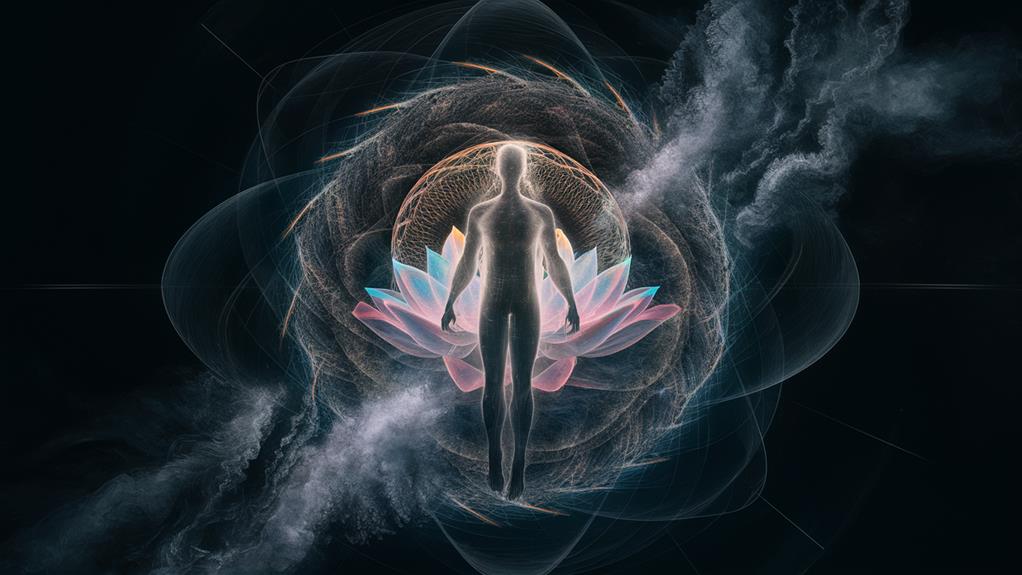
Diving into the depths of sensory deprivation releases profound psychological transformations that can reshape your entire mental landscape. As external stimuli fade away, you’ll discover layers of consciousness previously hidden beneath daily distractions, revealing a vast inner territory waiting to be explored.
In this stripped-down state of awareness, you’ll notice how your mind begins to shift and reorganize itself. You might experience time dilation, where minutes stretch into what feels like hours, or encounter vivid imagery that emerges from your subconscious mind.
These alterations in perception often lead to increased self-awareness and emotional clarity that persist long after your session ends.
You’ll find that regular exposure to sensory deprivation can enhance your psychological resilience and emotional regulation. The quieting of external noise allows you to process deep-seated thoughts and feelings, often resulting in spontaneous insights and resolution of internal conflicts.
This journey into your inner space can catalyze significant personal growth, helping you break free from limiting beliefs and access states of consciousness that facilitate profound healing and self-discovery.
Future of Consciousness Exploration
Sensory deprivation’s role in consciousness exploration stands at the cusp of a revolutionary breakthrough.
You’ll witness the convergence of ancient wisdom and cutting-edge neuroscience as researchers reveal the mysteries of altered states through controlled isolation environments. The future promises more sophisticated float tanks, electromagnetic chambers, and virtual reality systems that’ll help you navigate the depths of your consciousness with unprecedented precision.
You’re entering an era where you’ll have access to customized consciousness exploration tools, tailored to your unique neurological patterns and spiritual inclinations.
Advanced brain imaging technology will map your mystical experiences in real-time, while AI-assisted guidance systems will help you navigate through different states of awareness.
You’ll discover how sensory deprivation can serve as a gateway to expanded consciousness, offering insights that bridge the gap between scientific understanding and transcendent experience.
As you venture into this frontier, you’ll find yourself part of a growing movement that’s redefining our understanding of human potential.
The integration of sensory deprivation into therapeutic practices, spiritual development, and cognitive enhancement will open doorways to dimensions of experience that were once considered beyond reach.



